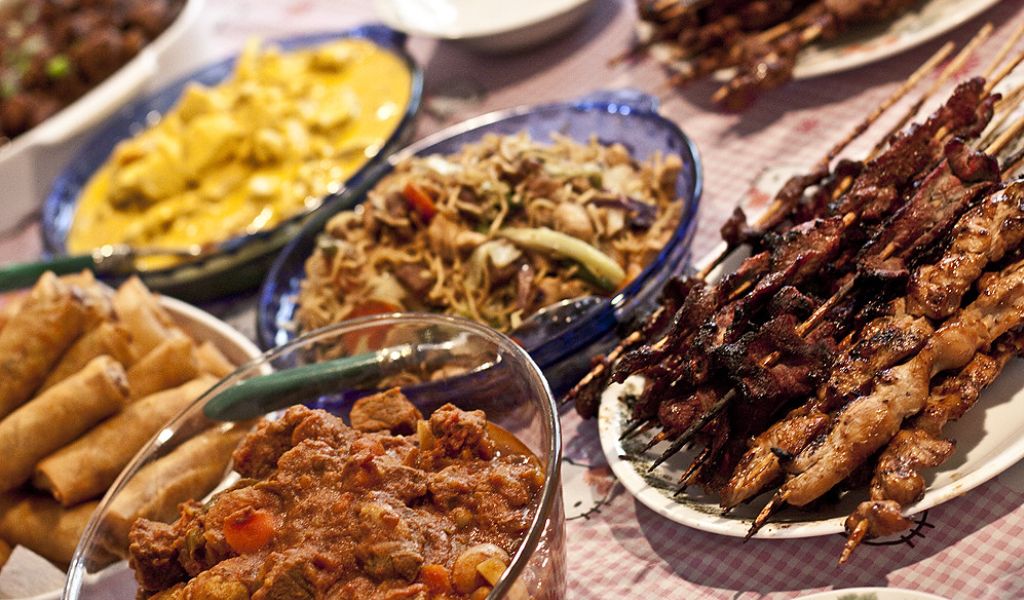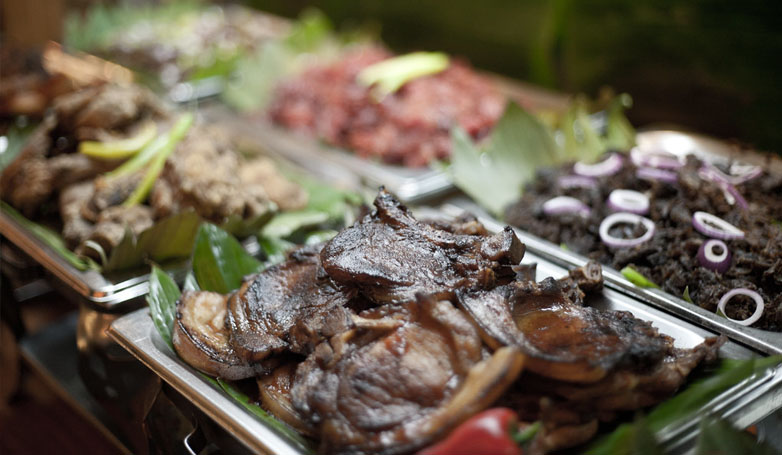Embark on a Flavorful Journey: The Ultimate Guide to Authentic Filipino Cuisine
When it comes to vibrant and hearty cuisine, Filipino dishes stand out with their unique flavors and rich history. From the bustling streets of Manila to the serene landscapes of Palawan, each region offers a distinct culinary experience that tells a story of cultural heritage and local traditions. Whether you’re a seasoned foodie or a curious traveler, the Philippines is a food paradise waiting to be explored. So, tighten your apron, and get ready to dive into the top 10 authentic Filipino dishes that will tantalize your taste buds and give you a taste of the country’s soul.
1. Adobo: The Unofficial National Dish
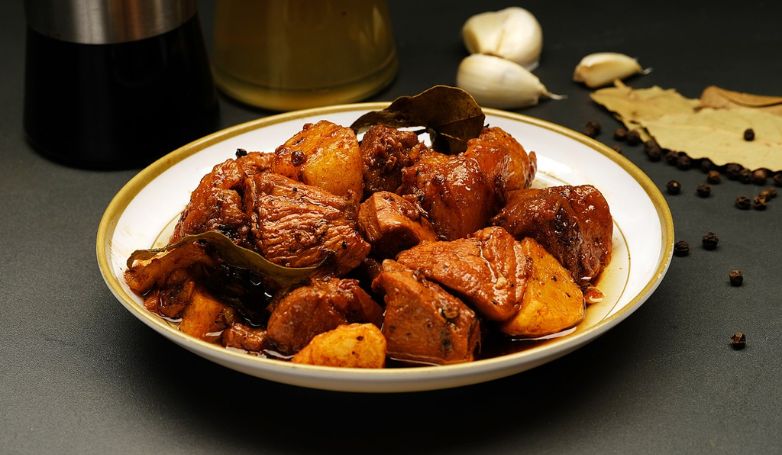
Adobo is a quintessential Filipino dish with roots tracing back to pre-colonial times. The term “adobo” is derived from the Spanish word “adobar,” which means “marinade,” but the Filipino adobo predates the Spanish colonization of the Philippines. Traditional indigenous cooking methods involved stewing meat with vinegar and salt for preservation. Over time, this process evolved into what is now known as adobo, with the Spanish influence enriching the flavor using ingredients like garlic and soy sauce.
Facts
- Adobo can be made with a variety of meats, including chicken, pork, beef, and even seafood.
- The dish is known for its savory, slightly tangy, and garlicky taste, with a harmony of soy sauce and vinegar as the base of the marinade.
- Every Filipino family has its unique adobo recipe, which can include ingredients like coconut milk, bay leaves, peppercorns, and sometimes sugar for added sweetness.
2. Sinigang: A Tamarind-Soured Stew
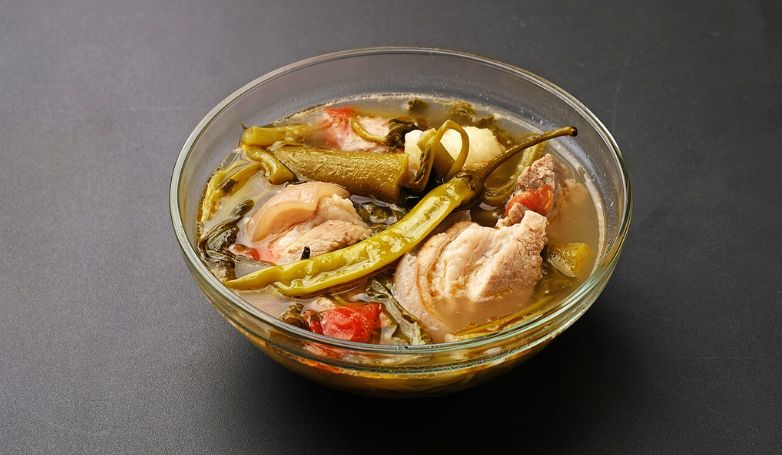
Sinigang is a sour soup or stew that is a beloved mainstay in Filipino cuisine. This dish embodies the essence of Filipino comfort food and is characterized by its sour flavor, which traditionally comes from tamarind (sampalok). It is said to have originated from the indigenous cooking practice of stewing meat and vegetables, sourcing the sourness from whatever local acidic fruits were available, and later popularized with the use of tamarind brought over from Southeast Asia.
Facts
- Common ingredients in sinigang include pork, fish, or shrimp, paired with a variety of vegetables like water spinach (kangkong), radishes, eggplant, and long beans.
- Alternative souring agents sometimes used are guava, calamansi (Philippine lime), and green mango.
- Sinigang is enjoyed year-round but is especially popular during the rainy season when the warm soup offers a comforting reprieve.
3. Lechon: The Festive Roast
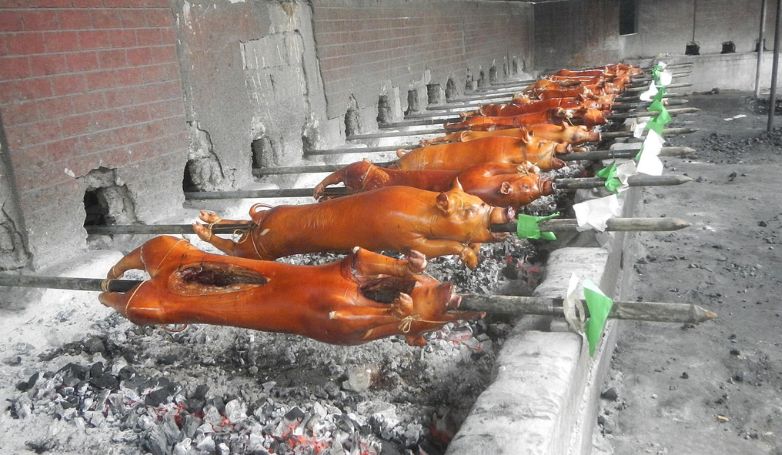
Lechon is a festive Filipino dish that involves roasting a whole pig over open coals. The word “lechon” comes from the Spanish term that refers to a suckling pig but in the Philippines, it typically means a roasted adult pig. The practice of preparing lechon for celebrations is a tradition that spans several centuries and has its origins in the cultural exchanges with Spaniards during the colonial period.
Facts
- Lechon is commonly served during special occasions such as fiestas, weddings, and holidays, particularly Christmas and New Year’s.
- The skin of a perfectly cooked lechon is known for being crispy, serving as a prized component enjoyed by many.
- Each region in the Philippines has its variant of lechon, with some stuffing the pig with spices or lemongrass and others serving it with a liver-based sauce called “lechon sauce.”
4. Kare-Kare: The Peanut Sauce Sensation
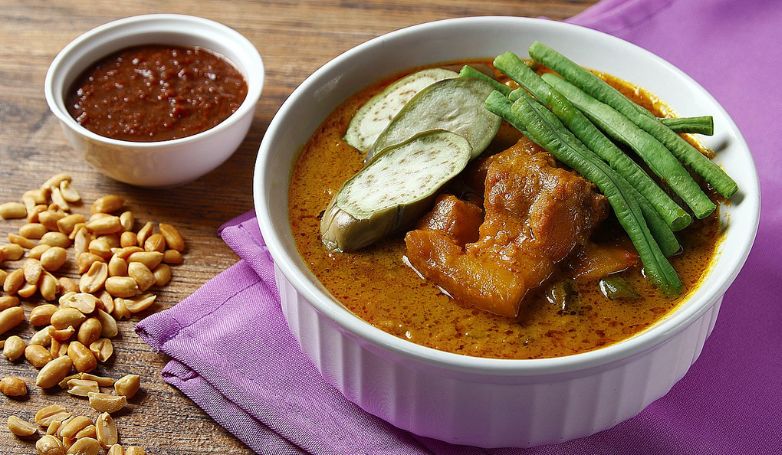
Kare-kare is a rich and hearty stew known for its thick peanut sauce, which is believed to have been influenced by both Filipino and possibly South Asian or Middle Eastern culinary traditions. The name is said to have originated from the word “kari” or “curry,” although the dish itself is nothing like Indian curry. The dish likely evolved during the centuries of trade between the Philippines, India, and the Middle East, with the peanut sauce being a later innovation.
Facts
- Kare-kare typically features oxtail, tripe, and pork hocks, complemented by a variety of vegetables like eggplant, Chinese cabbage (pechay), and string beans.
- It is traditionally served with bagoong, a fermented shrimp paste, which provides a salty contrast to the dish’s mild flavor.
- Nowadays, recipes can also include alternative meats like chicken or seafood for a different take on the classic.
5. Pancit: The Noodle Staple

Pancit is a term for noodles in Filipino cuisine and is considered a symbol of long life and good health, making it a staple at birthday celebrations. Its introduction to the Philippines is attributed to early Chinese traders, eventually becoming an integral part of Filipino culinary tradition. Adaptation over the years has led to a wide array of pancit varieties, each with its unique blend of ingredients and flavors.
Facts
- Common varieties of pancit include Pancit Canton, Pancit Malabon, and Pancit Palabok, each with distinct noodles and accompanying sauces or toppings.
- Pancit is typically cooked with a mix of meat like chicken or pork, seafood, and an assortment of vegetables, all seasoned with soy sauce or fish sauce.
- In Filipino culture, it’s considered good luck to eat pancit during celebratory events, symbolizing the wish for a long and prosperous life.
6. Halo-Halo: The Cool Dessert Melange

Halo-halo, which means “mix-mix” in Tagalog, is a beloved Filipino dessert that is as colorful as it is delicious. It’s a delightful concoction of crushed ice, evaporated milk, and various ingredients such as sweetened beans, coconut strips, sago pearls, gelatin, and fruits, all topped with a scoop of ube ice cream or leche flan. Served in a tall glass or bowl, halo-halo is not only a treat for the taste buds but also a visual feast.
Facts
- Halo-Halo’s origins can be traced back to the Japanese dessert Kakigori, which was adapted and given a Filipino twist during the pre-war era.
- This dessert is particularly popular during the hot summer months in the Philippines when the craving for a refreshingly sweet cool-down peaks.
- Each region in the Philippines might have its unique version of halo-halo, with local ingredients like ube halaya (purple yam jam) or pinipig (toasted rice flakes) adding distinctive flavors and textures.
7. Balut: The Adventurous Delicacy

Balut is a fertilized duck egg with a nearly-developed embryo inside that is boiled and eaten in its shell. Predominantly a street food, it is a high-protein snack that is often served with a pinch of salt, chili, and vinegar. Consumed as a late-night snack, it is also believed to be an aphrodisiac and a stamina booster.
Facts
- Balut is typically incubated for 14 to 21 days before it’s ready to be cooked, with the 17-day old eggs often considered the most ideal in terms of texture and flavor.
- This delicacy is not exclusive to the Philippines and can also be found in countries like Vietnam, Cambodia, and Laos, where it’s known by different names.
- Balut eating is sometimes made into a challenge for tourists or as part of reality TV game shows due to its shocking appearance to the uninitiated.
8. Kinilaw: The Filipino Ceviche
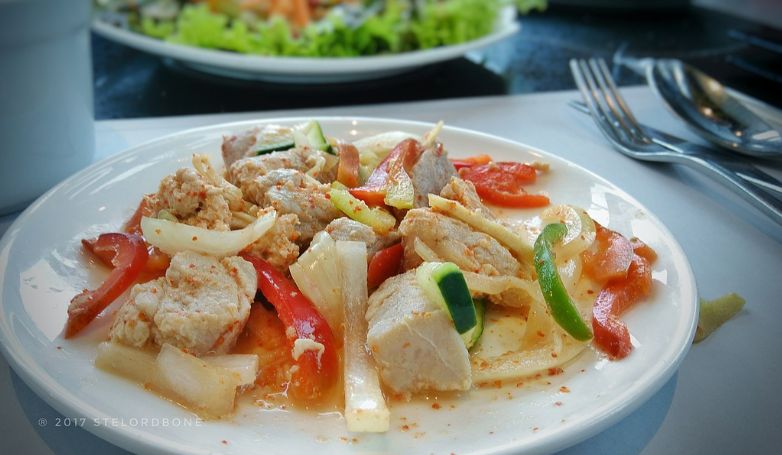
Kinilaw is a raw fish salad made from fresh, high-quality seafood that is “cooked” in vinegar and citrus juices such as calamansi. It is seasoned with salt, pepper, chili, ginger, and onions, and sometimes coconut cream is added for richness. Kinilaw is similar to Latin American ceviche but has a distinct local character with its choice of ingredients and preparation methods.
Facts
- The word kinilaw or kilawin means “eaten fresh” in Tagalog, which explains the essence of the dish as it highlights the freshness of the seafood used.
- Unlike ceviche, which uses the acidity from lime or lemon juice, kinilaw primarily employs vinegar as the acidic component for the denaturation process of the proteins in the seafood.
- There are various regional variations of kinilaw across the Philippines, showcasing different types of fish, vinegar, and additional ingredients like mango, which can add a sweet and tangy flavor.
9. Bicol Express: The Spicy Coconut Cream Dish
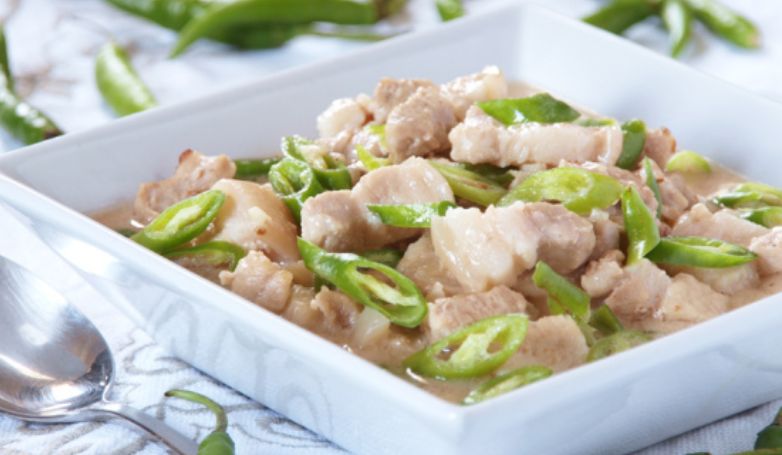
Hailing from the Bicol region, famed for its love of chili and coconut, Bicol Express is a fiery stew that is both creamy and spicy. The dish consists of pork pieces stewed in coconut milk, flavored with shrimp paste, and studded with an ample amount of small green chilies called “siling haba.” It is often served as a main dish with rice to balance the dish’s heat.
Facts
- The dish is named after the passenger train service that runs from Manila to the Bicol region, where this spicy cuisine originates.
- Bicol Express was popularized in Malate, Manila in the late 20th century but has since become a staple in Filipino restaurants nationwide.
- Due to its popularity, different variations have emerged, such as using seafood instead of pork, or the addition of green beans or eggplant for extra texture and flavor.
10. Tapsilog: The Breakfast of Champions

Tapsilog is a portmanteau of the elements that make up this hearty Filipino breakfast: “tapa” (cured beef), “sinangag” (garlic fried rice), and “itlog” (egg). Served with a side of vinegar or a light broth, it is a staple that provides a satisfying energy boost that is ideal for starting a busy day. Each component’s distinct flavor creates a balance of savory, tangy, and garlicky notes in every bite.
Facts
- Tapa originally referred to a method of preserving meat through curing and drying. Today, the beef is typically marinated in a mixture of soy sauce, vinegar, sugar, garlic, and black pepper before being pan-fried or grilled.
- The term “silog” has become a generic term for breakfast meals featuring sinangag and itlog, giving rise to other variations such as “longsilog” (longganisa, fried rice, and egg) and “bangsilog” (bangus/milkfish, fried rice, and egg).
- Tapsilog is a favorite comfort food in the Philippines and has even found its way into the menu of various Filipino restaurants around the world, epitomizing the perfect blend of simplicity and taste.
Immerse Yourself in the Rich Tapestry of Filipino Cuisine
Exploring authentic Filipino dishes is like embarking on a gastronomic adventure that reflects the heart and soul of the Philippines. Each dish is a woven patch in the elaborate fabric of Filipino culture, served with a generous side of warmth and conviviality. Whether you’re a culinary explorer or a local food lover, these top 10 Filipino dishes provide a delicious snapshot of the archipelago’s diverse and delectable cuisine. So book your ticket, ready your fork, and prepare for a taste experience that’s as vibrant and colorful as the Philippines itself!
FAQs about Authentic Filipino Dishes
1. Are there vegetarian or vegan Filipino dishes?
Yes, there are vegetarian and vegan options in Filipino cuisine, although traditional Filipino food is often meat-heavy. Dishes like pinakbet (stewed mixed vegetables with shrimp paste), can be made vegan by omitting the shrimp paste and replacing it with a vegan alternative. Many pancit recipes can also be adapted to be vegetarian or vegan.
2. How is Filipino food traditionally served and eaten?
Filipino meals are often served family-style, with a variety of dishes placed at the center of the table for everyone to share. Rice is served with most meals, and utensils typically include a spoon and fork. In some traditional settings, particularly during a kamayan feast, food is served on banana leaves spread over a table, and diners eat with their hands.
3. Can Filipino food be found outside of the Philippines?
Yes, Filipino cuisine has been gaining international recognition and can be found in many locations around the world, especially in areas with large Filipino communities, such as in parts of the United States, Canada, and some countries in the Middle East and Asia.
4. What makes Filipino cuisine unique?
Filipino cuisine is a blend of indigenous, Spanish, Chinese, and American influences, combined with a tropical abundance of seafood, vegetables, and fruits. This creates a unique and diverse culinary experience with flavors ranging from savory and salty, to sour and sweet.
5. Is Filipino Cuisine Healthy?
Filipino cuisine is varied and can be both healthy and indulgent. Traditional Filipino cooking involves fresh ingredients, grilled meats, and plenty of fruits and vegetables, but it can also include fried dishes and sugary desserts. Portion sizes and ingredients can be adjusted for those seeking healthier options.

